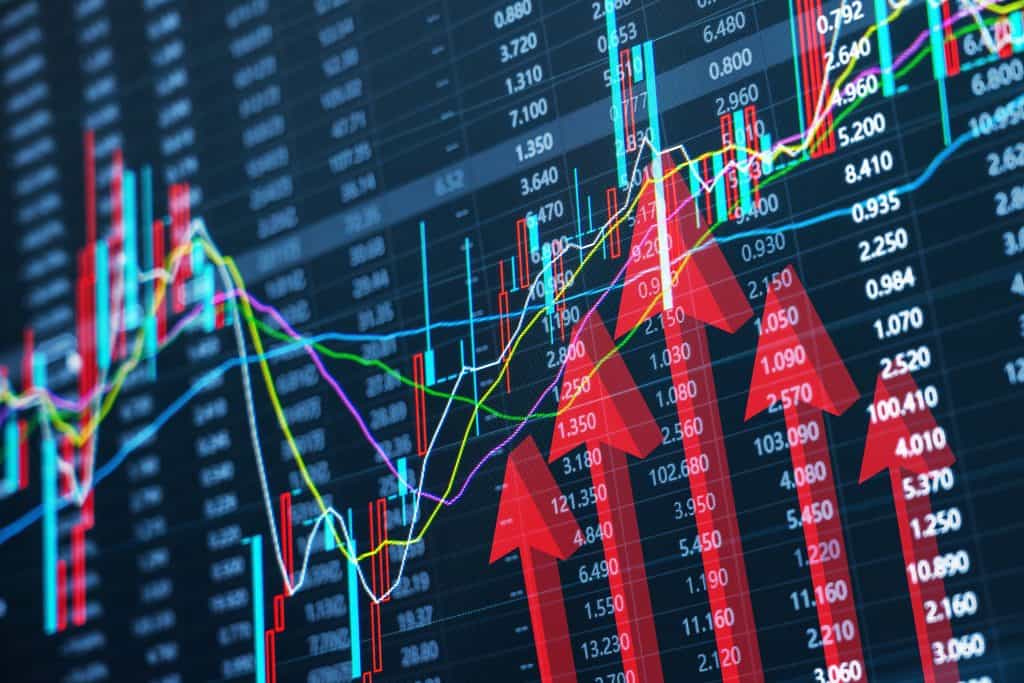Major stock market indicators’ movements tend to signal more than a movement in prices—more a mood, outlook, and shifting expectations of a whole economy. The Dow Jones Index remains one of the financial world’s most closely watched barometers. What is behind this index on any given day is peeled away through the layers of market psychology, global events, sector activity, and investor tactics.
- The Contribution of Indicators Towards the Formation of the Index: Economic indicators such as unemployment, consumer expenditures, GDP growth, and production all have a crucial contribution to make towards propelling the movement of the Dow. A better-than-expect jobs number has the ability to instill confidence in the economy’s strength, which spurs investment in industrials and consumer-discretionary in the index. But, indications of slowing growth or accelerating costs can create fear and cause selloffs. The Dow Jones Index today will typically react quickly when such indicators emerge, as there are trader position adjustments based on perceived strength or weakness in the economy.
- The Power of Big Firm Announcements: The Dow’s large firms can move the whole index with a single news announcement. Because the Dow is weighted to price, a big move in one of its priciest stocks, such as UnitedHealth or Goldman Sachs, can have a disproportionate influence. That is why market observers tend to try to pay attention to following the Dow Jones Index quote alongside following individual company news, with the knowledge that the sudden big move could seal the day’s fate.
- Earnings Season and Its Effect on the Market: Earnings announcements are perhaps the most direct cause of Dow Jones Index performance. Since the Dow includes top companies in a number of industries, the overall financial health of these firms can affect investor sentiment. Poor earnings announcements, especially from titans like Apple or Boeing, will lower the index. These announcements also have an impact on related sectors, contributing to the activity across the index.
- Interest Rate Speculation and Fed Announcements: US Federal Reserve announcements and decisions create waves across the stock market. Interest rate change talk has a direct impact on the actions of investors. When rates are expected to rise, borrowing is more expensive, and expansionary sectors of the economy underperform. When the Fed signals the need to slow down or cut, markets tend to rally in expectation of fewer credit-tightening conditions. The Dow Jones Index overview tends to reflect such an expectation even before official announcements, in the shadow of speech fine print and policy releases.
- Global Events and Their Ripple Effects: While the Dow is an American index, it is not isolationist. Global events have a potent influence. For instance, Asian supply chain disruption or European energy instability can affect the performance of equities listed on Dow. Such global linkages mean that even seemingly distant events can alter the Dow Jones Index stats, especially in manufacturing, technology, and energy sectors.
- Sector Rotation and Investment Trends: Investors shift their investments from one industry to another depending on the market. With the rise in interest rates, financials might enter the fray, with tech trailing behind. During uncertain times, healthcare, and consumer staple stocks perform better due to the fact that they are considered more stable. These inherent shifts drive the direction of the dow jones index today. Understanding the popular sectors helps in the decoding of why the index is rising or falling at a particular moment.
- Market Psychology and Algorithmic Trading: Human psychology is no longer alone in guiding what motivates markets. Automated trading systems and algorithms also amplify price action. They’re designed to react within milliseconds to technical analysis signals, news headlines, or changes in volume. Because they trade at scale, they can push prices rapidly in one direction, creating momentum that human traders can then copy. This intersection of machine-based decision-making has absolutely rendered the Dow Jones Index outlook more dynamic and, occasionally, more unstable.
- Commodities and Currency Market Relationship: Oil, gold, and other commodity prices have a tendency to push investor expectations. Rising oil prices, say, can enhance energy stocks but penalize transport and manufacturing. Currency movements, especially the fluctuations in the dollar, are likely to affect the export competitiveness of United States companies and hence the performance of Dow firms. Down jones index stats are monitored by traders, who supplement such data with currency and commodity market analysis to enable them to take more informed decisions.
- Institutional Investor Behaviour: Large institutional investors such as mutual funds, hedge funds, and pension managers control huge pools of capital. Their activity can actually drive big moves in the Dow. These positions are not always news-driven but tend to be more reflective of internal strategy, seasonal positioning, or worldwide positioning. The outline of the dow jones index sometimes shifts without relation to specific headlines, but rather more frequently due to such institutional intervention.
- Technical Analysis and Chart Patterns: Technical analysis is employed by most traders to predict future direction. Chart patterns, moving averages, volume patterns, and momentum measures can create buying and selling signals. When key support or resistance levels are broken, this can trigger a series of trades that rapidly remove the index from its position. While this form of analysis ignores news and fundamentals, its impact on investor psychology can make it a self-fulfilling force in setting the dow jones index trend.
- Investor Confidence and Levels of Volatility: The level of volatility itself is also an important trigger. During times of low volatility, it will be a reflection of stability and enable risk-taking, which will spur the Dow. High volatility, however, is linked to uncertainty and aversion to risk. The causes could be upcoming elections, trade tensions, or surprise shock on earnings. Tracking the volatility of the market is what assists in accounting for the changes in the dow jones index today, especially during periods of drastic change or surprising news.
Conclusion
While no single factor ever does entirely explain the market’s behavior, taking a close examination of all these layers gives one an idea of what is creating today’s volatility. The Dow Jones Index is a number, but more than that—it is a reflection of investor hopes, fears, rationale, and even sometimes sheer speculation. To fully understand its fluctuations, one must penetrate the quote and into the background that drives it. Whether caused by economic statistics, worldwide news, or altered investment philosophies, each fluctuation is a mirror of the world as it stands and perhaps where it is headed next.

Andrea Bell is a blogger by choice. She loves to discover the world around her. She likes to share her discoveries, experiences and express herself through her blogs. You can find her on Twitter:@IM_AndreaBell






